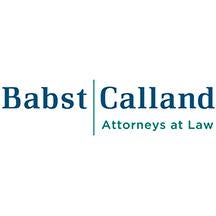On December 15, 2022, the U.S. Environmental Protection Agency (EPA) published a final rule amending its All Appropriate Inquiries (AAI) Rule to incorporate ASTM International’s E1527-21 “Standard Practice for Environmental Site Assessments: Phase I Environmental Site Assessment Process” (Final Rule).1 The Final Rule – effective February 13, 2023 – allows parties conducting due diligence to utilize the E1527-21 standard to satisfy the AAI requirements under the Comprehensive Environmental Response, Compensation, and Liability Act (CERCLA), for the purpose of obtaining liability protections when acquiring potentially contaminated properties. Specifically, “bona fide prospective purchasers,” “contiguous property owners,” and “innocent landowners” can potentially obtain CERCLA liability protection by complying with the AAI Rule. More broadly, however, other regulating bodies, such as states, often require or recommend using the E1527 standard for evaluating potentially contaminated properties prior to purchase.
The Final Rule’s publication ends months of speculation and confusion about when and how EPA would address E1527-21 and its prior version, E1527-13. After ASTM issued E1527-21 in November 2021, EPA published an applicable direct final rule (and accompanying proposed rule, requesting comments on the direct final rule) in March 2022 incorporating E1527-21 into the AAI Rule, but also allowing parties to continue to use E1527-13 to satisfy AAI requirements. Many commenters opposed this approach, predicting confusion about which standard to use and pointing out that ASTM would eventually do away with E1527-13. In response to these comments, EPA withdrew the direct final rule in May 2022. The Final Rule addresses these concerns by removing the AAI Rule’s reference to the E1527-13 standard one year from the Final Rule’s publication in the Federal Register, i.e., December 15, 2023. Until then, any Phase I Environmental Site Assessment (ESA) conducted using E1527-13 will be considered compliant under the AAI Rule.
Among its many updates, E1527-21 adds definitions for certain terms (e.g., “significant data gap”) and updates other definitions for clarity and consistency (e.g., “recognized environmental condition”); it explains how long a Phase I ESA remains viable (no more than 180 days prior to property acquisition, or up to one year if certain components are updated); and expands the scope of the subject property’s historical review to include adjoining properties. One of the most notable and potentially significant updates is E1527-21’s discussion of “emerging contaminants,” or “substances not defined as hazardous substances under CERCLA,” which includes discussion of how and whether to address per- and polyfluoroalkyl substances (PFAS).
Specifically, E1527-21 categorizes PFAS and emerging contaminants not identified as hazardous under federal law as outside the scope of the E1527-21 standard. E1527-21 notes, however, that when such substances are defined as hazardous under applicable state law, and a Phase I ESA is being performed to satisfy federal and state requirements, analysis of such substances may be addressed in the Phase I ESA as “Non-Scope Considerations.” Non-Scope Considerations are potential environmental conditions at a property that might not give rise to CERCLA liability but may be relevant to a potential purchaser’s decision to acquire the subject property. Based on property-specific factors, a potential purchaser may also direct the environmental professional conducting the Phase I ESA to include analysis of PFAS or other emerging contaminants to provide a more fulsome understanding of potential risks associated with the subject property. Importantly, E1527-21 advises that when an emerging contaminant is designated a CERCLA hazardous substance, that contaminant must be evaluated within the scope of the Phase I ESA.
One commenter to the March 2022 direct final rule and proposed rule said that the emerging contaminants section threatened to lead to premature CERCLA liability for landowners and prospective buyers and requested a formal notice and comment period for the E1527-21 standard. Other commenters requested specific modifications to certain E1527-21 defined terms. In response, EPA noted in the Final Rule that E1527-21 is not an EPA regulation that it has authority to modify and that such requests should be directed to ASTM for consideration. Further, EPA said that because use of the E1527-21 standard is not required for complying with the AAI Rule, i.e., compliance can be achieved using other methods, the agency found no reason not to recognize E1527-21 as compliant with the AAI Rule. EPA’s response to comments document is available here.
With respect to PFAS, the timing of the Final Rule’s publication is particularly relevant to parallel rulemaking. In September 2022, EPA published a proposed rule designating PFOA and PFOS – the most common and well-studied PFAS – as CERCLA hazardous substances. The comment period for that proposed rule ended on November 7, 2022, and the final version is expected to be published in 2023. If EPA designates PFOA and PFOS as CERCLA hazardous substances as expected, they will fall within the scope of E1527-21. The same will apply to any other PFAS that EPA designates as CERCLA hazardous substances, which the agency has indicated it is considering via a future rulemaking.
Although many states have been regulating PFAS for years under various regulatory programs, similar efforts by the federal government are more recent. In addition to the Final Rule and the anticipated PFOA and PFOS CERCLA hazardous substance rule, EPA is also in the process of developing a proposed national drinking water regulation for PFOA and PFOS and is also considering regulatory actions to address other PFAS. These changes and others likely to occur in the coming months and years underscore the importance of understanding the various risks associated with PFAS contamination and how to comply with current and forthcoming requirements.




 />i
/>i

